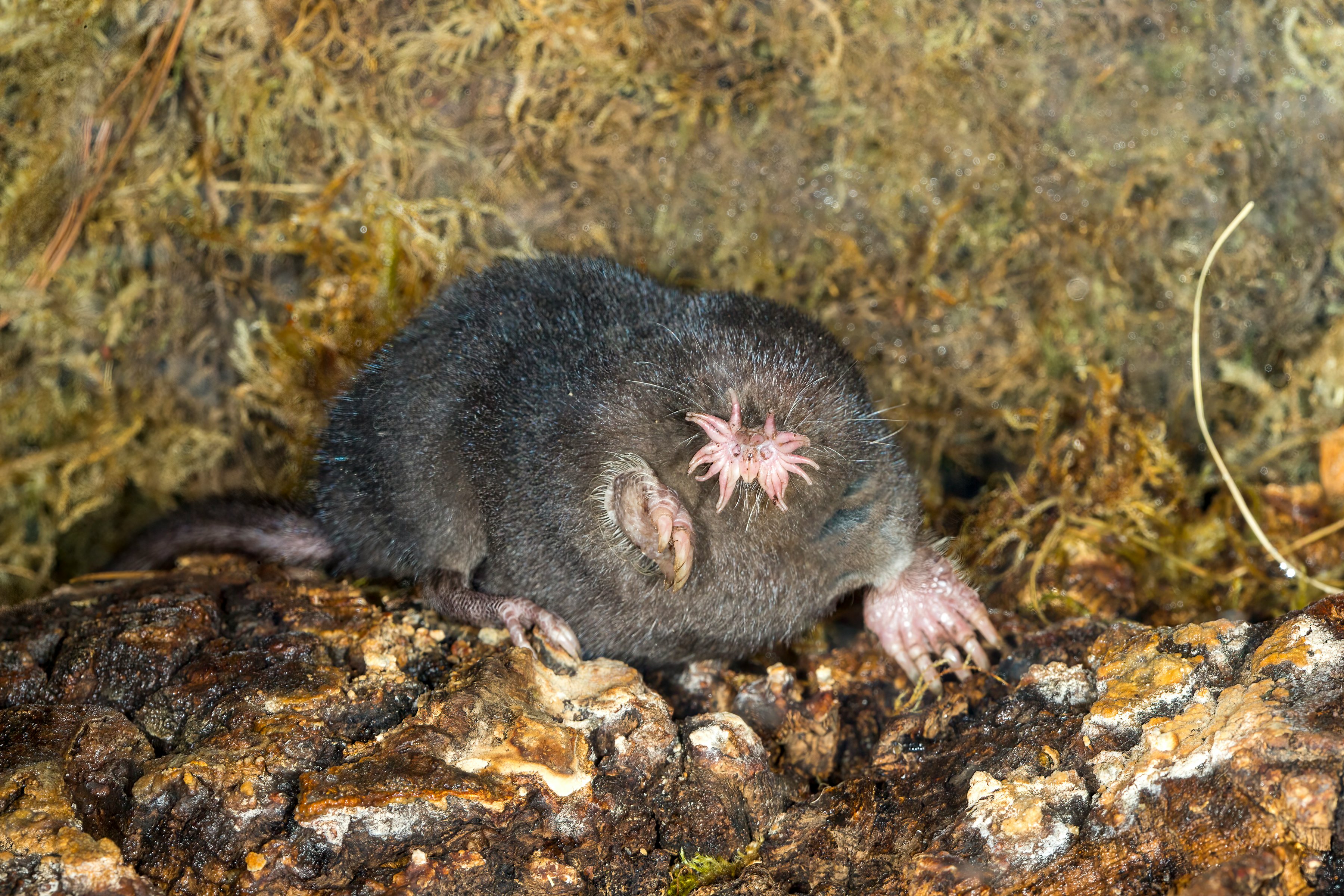
In 2018, in A Quiet Place, we met a cadre of horrifying, sound-triggered aliens who use their impeccable sense of hearing to hunt. We get to know them through the eyes of the Abbott family, a fivesome who have managed to stay alive for more than a year by communicating with sign language. The new film, A Quiet Place: Day One, which is the last installment of the trilogy, reveals what happened the day the aliens first arrived on Earth.
The aliens, called Death Angels in the film, are big, hulking creatures with oversized arms, razor-sharp claws, and segmented heads that open like “hellish cabbages,” according to the Quiet Place Wiki. Inside a red, pulpy interior holds their highly responsive auditory equipment and is their one evident vulnerability. They clearly resist earthly categorization.

But are there any close resemblances? Maybe! Star-nosed moles may not be giant mantis-looking creatures with super hearing, but they’re bizarre, underground-dwelling, hamster-sized creatures with giant claws for digging. But the piece de resistance is their cold, fleshy starburst of a nose that opens and closes into 22 pink tentacle-like feelers. Their nose helps them navigate the underground world primarily by touch, though it works as a pretty good sniffer too.

“This nose is probably the most sensitive touch organ on the planet, for sure for a vertebrate,” says Kevin Campbell, a professor of environmental and evolutionary physiology at the University of Manitoba. To give an idea of just how sensitive this feeling nose is, Campbell says that the star-nosed mole can distinguish three red blood cells in a row from four. Their wriggling face-hand senses things on the micron-level. “It's just unfathomably touch sensitive,” he says.
These tentacles are covered in structures called Eimer’s organs. An Eimer’s organ is “kind of a dome shaped structure with a little pit in the middle,” Campbell says. He estimates there’s between one and two thousand of them per tentacle, and each one has multiple touch receptors. This mole’s nose has more than five times as many touch receptors as the human hand. This equipment is highly nuanced. The 20 outer appendages search for food while 2 smaller ones directly above the mouth assess whether something might be edible.
This brilliant nose, then, stacks up against the Death Angels’ horrific heads. In A Quiet Place: Day 1 we even have the opportunity to get a close look at their sense organ as one character, Eric, silently stares into the gooey cavity and watches something pulse. But since Eric doesn’t make any clamor, he goes undetected, luckily for him. But if these aliens could hear as well as the star-nosed mole can feel, then perhaps they’d be able to hear the swish of heartbeat or a sliver of breath. In that case, there’d be no movies to see, because all humans would be dead.
It’s not just this analogous organ that makes the star-nosed mole the best corollary. They’re wickedly fast and deadly — for worms and insects, anyway. Star-nosed moles are such vicious killers, they earned themselves a place on National Geographic’s “World’s Deadliest” series. Their noses can make contact with the ground more than a dozen times per second, according to Campbell. Their reflexes are even faster. In about 20 milliseconds, they can deduce whether something they’ve found with their snoot is worth eating. Humans, by contrast, process similar information in hundreds of milliseconds, Campbell says.
“To top it all off, it's also the world's fastest eater,” Campbell says. The mole can feel, identify, and eat something all in about a quarter of a second. These moles also have the advantage of the ability to swim, unlike the aliens. They can even hunt underwater by blowing and inhaling bubbles that trap scent molecules.
It’s lucky for us that these aliens don’t exist, and luckier still that the star-nosed mole hunts insects and worms, not humans.







